On a cold and windy November morning, Darin Williams climbed into his truck long before daylight. The 51-year-old checked his cell for trail camera photos, and he was stunned to see a picture of a colossal Kansas buck that had crossed a food plot and walked within bow range of his blind that morning.
“Neighbors and I knew that buck was around, but no one had a chance to take him,” Williams tells Outdoor Life. “Some trail cam pictures of the buck had been taken about three weeks earlier, but nowhere near my farm. Some friends also had seen him with does, always locked down with one in a draw or timber.”
So Williams was surprised to see the buck on his 7-acre pea patch without a doe.
“I thought, maybe, just maybe, he’s roaming again looking for hot does because the rut was wide open.”
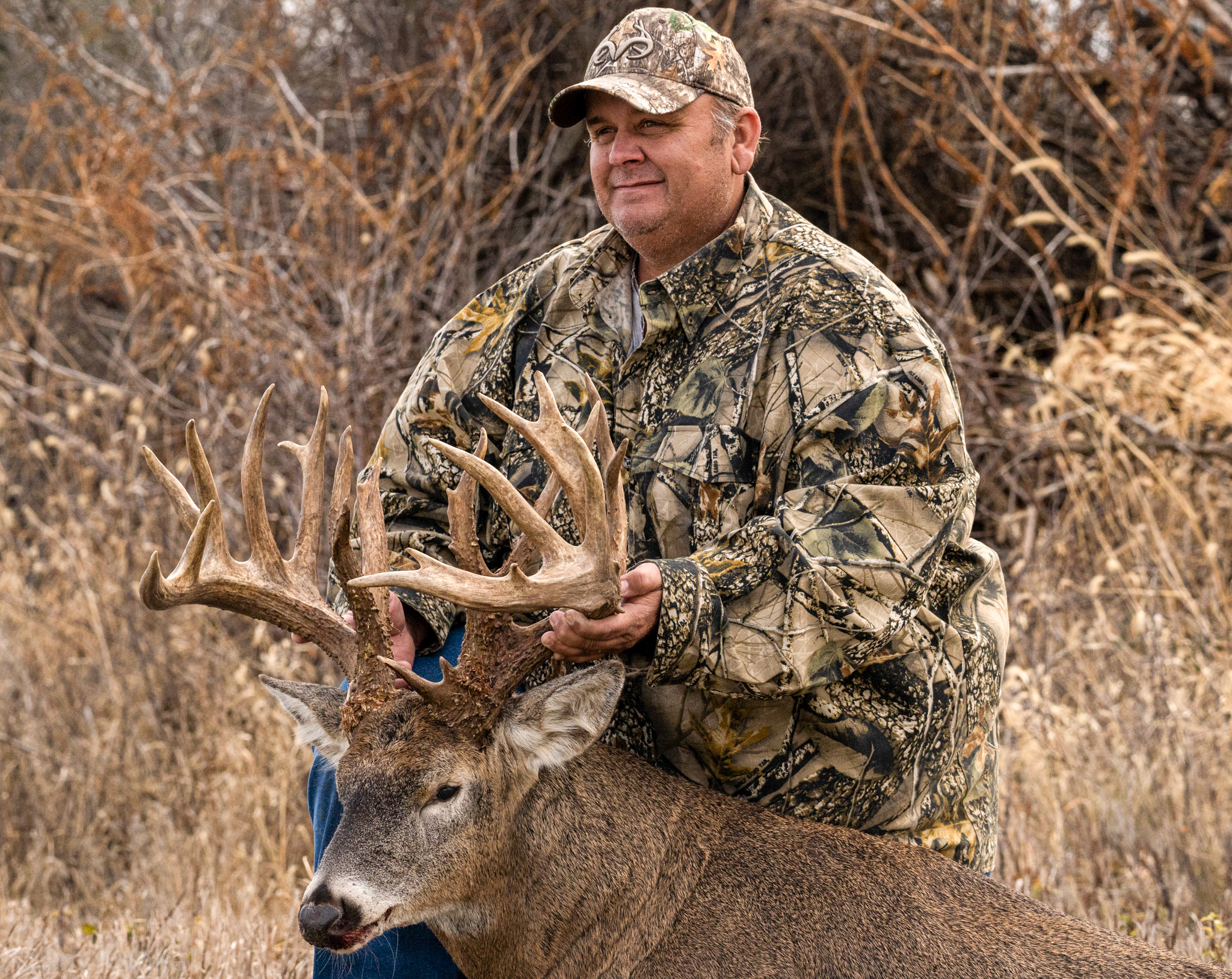
It was Nov. 16, 2022, and Williams decided to hunt his blind that afternoon. It was 20 degrees, and the wind was strong—20 mph—but blowing in the perfect direction for his blind.
Williams is a farmer in Waverly, Kansas, and he had found a huge shed in 2021 that turned out to belong to a buck his buddy, outfitter Travis Sipe, recognized.
“The buck had a unique rack, with heavy mass and lots of points, and Travis said the shed I found matched the buck he had seen, and that he was trying to put clients on. Travis even had a bowhunter in 2021 get a 20-yard shot at the same buck but missed. The buck was a bit smaller in 2021, in about the 200-inch class.”
The peas Williams planned to hunt over were planted in a travel corridor between patches of timber on his farm. Williams had planted the peas for deer and hoped a small pond would attract them, too.
“The spot was choice because it was well off public roadways, but not too far for me to reach using my ATV,” says Williams says.
As he drove his Ranger eight miles to his hunting blind that afternoon, he saw lots of deer.
“The rut was wide open, and I saw several giant bucks chasing does as I drove to the pea patch,” Williams says. “At least two of the bucks were big shooters in the 150-inch class.”
But Williams, who has deer hunted Kansas for 30 years, knew this buck was special, and he was committed to holding out for it. Early in his sit, Williams saw a few does and small bucks chasing them. When a coyote showed up, he thought his hunt was over. But not long after, a 6-point chased a doe through the peas, and she dashed into thick brush near Williams’ blind. The buck stopped in the open field, however, and stared at the thick cover behind his blind.
“I knew he was looking at something, so I turned around and saw a nice 145-inch, 8-point buck chasing a doe in brush behind me.”
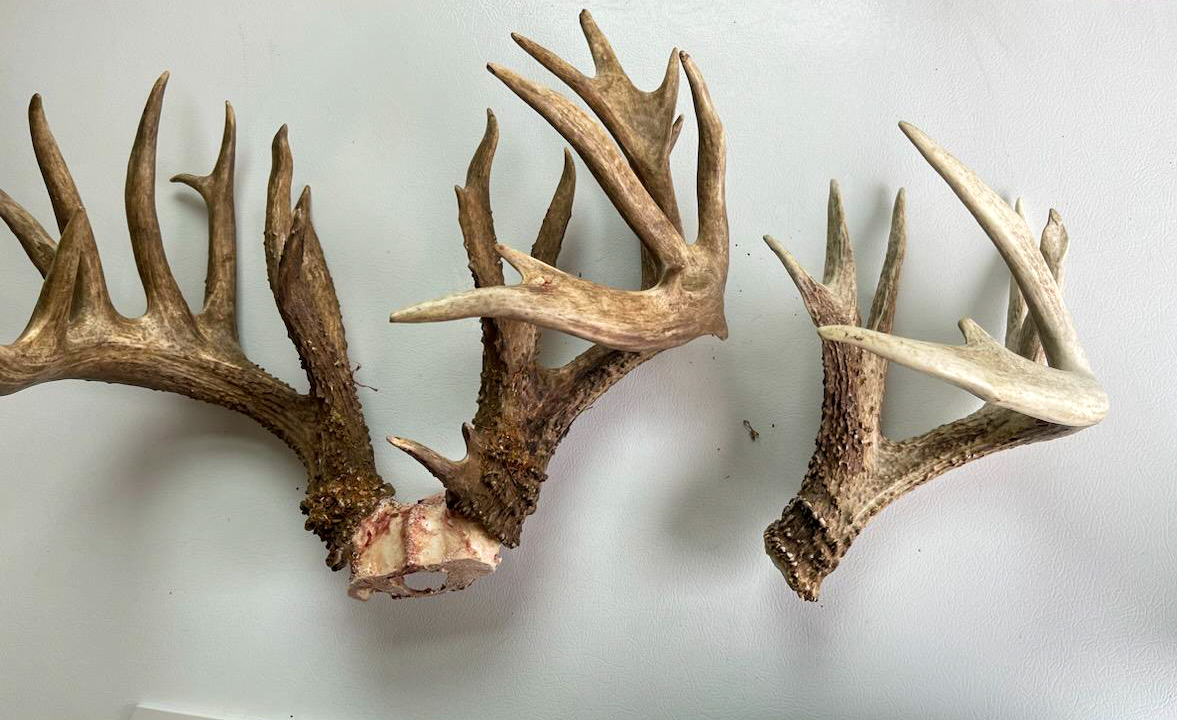
That summer Williams had cleared a path to access his stand, and the deer were clearly using it as a staging area. Its timbered edges were dotted with rubs and a few scrapes. The 8-point chased his doe through cover around Williams’ blind and into the peas. Then that buck stopped and turned toward Williams’ blind.
“That 8-pointer was on full alert,” Williams says. “He stomped the ground, walked away in the pea patch, then came back, looking into cover behind my blind. He did that several times, and I knew something was going on. Then the 8-pointer suddenly looked different—absolutely petrified.”
Williams turned again, and saw the giant buck just 15 yards away, pushing a third doe through the cover. He watched the giant buck for about 15 seconds, then the two deer disappeared into brush as they worked away from his blind. He considered grunting, but didn’t.
“I had decided to let everything just happen that afternoon—keep it natural, without messing up the magic,” he says. “I had 45 minutes of hunting light remaining and had the biggest buck I’d ever seen chasing hot does around my blind. So I sat, watched and waited.”
About 15 minutes passed, then Williams spotted a doe appear on a trail, headed toward the pea patch. As the doe worked to just eight yards in front of his blind, the colossal buck appeared on her trail, about 35 yards away.
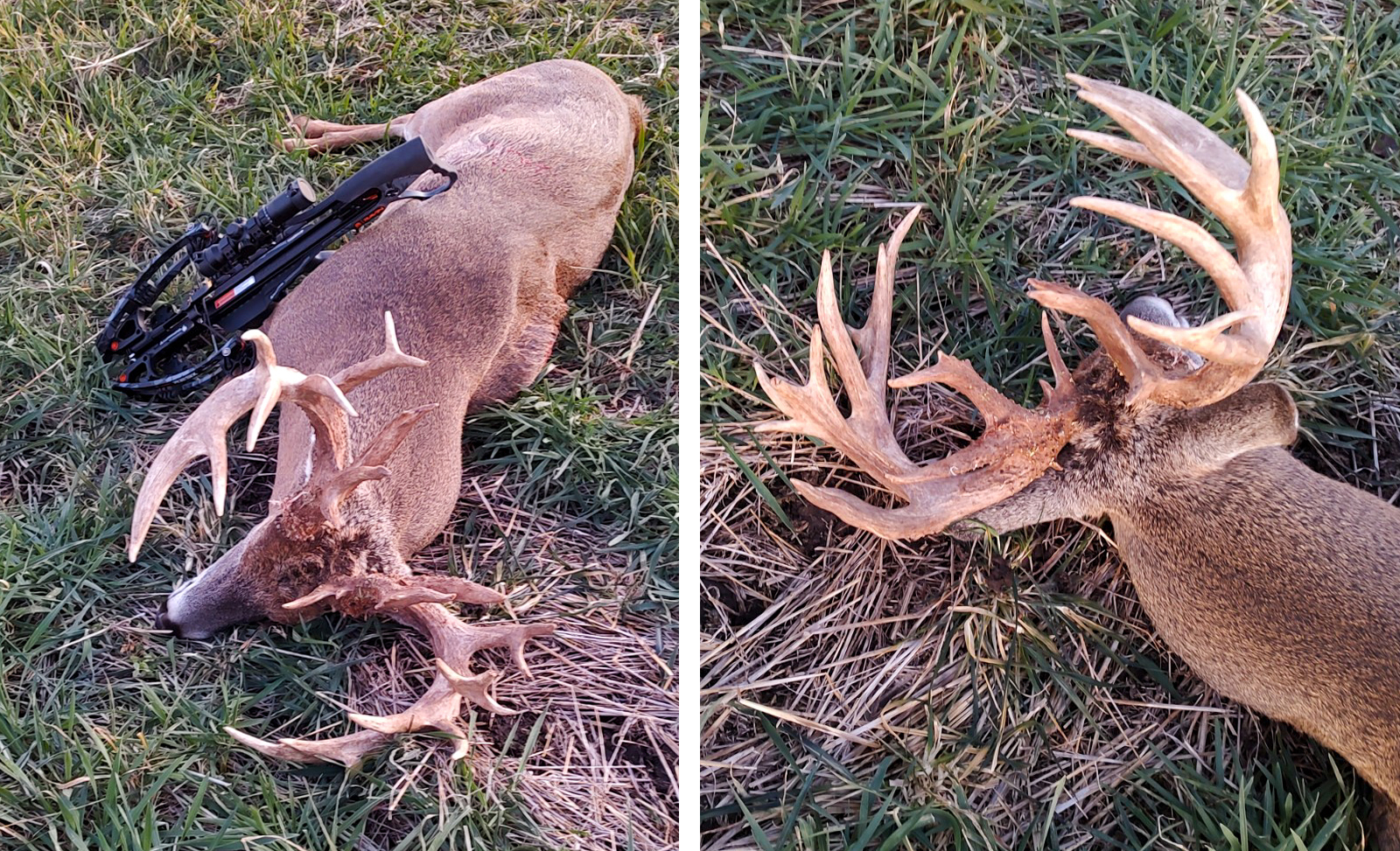
“He was very cautious,” Williams says. “He’d walk a few steps, stop and sniff and look at the two does and 8-point in the field. Then he’d take a few more steps.”
Finally, the buck stopped just 10 yards from the elevated blind.
“But I could just see his nose and tips of his antlers, because a cedar tree was blocking his body,” says Williams. “Then he took another step, and I could see his whole side.”
The does and the 8-point moved farther out into the field, and the colossal buck stepped directly in front of the blind, broadside at 8 yards.
Williams’s Ravin crossbow was snapped into a tripod rest, and he didn’t dare make a sound by detaching it. So he picked up the crossbow, tripod and all, and settled the 30-yard crosshairs low on the deer’s chest and pressed the trigger.
The arrow was there so fast that Williams never saw the shaft in flight. The buck jumped away, then turned running back toward the blind. He wobbled, then crashed 35 yards from the shot.
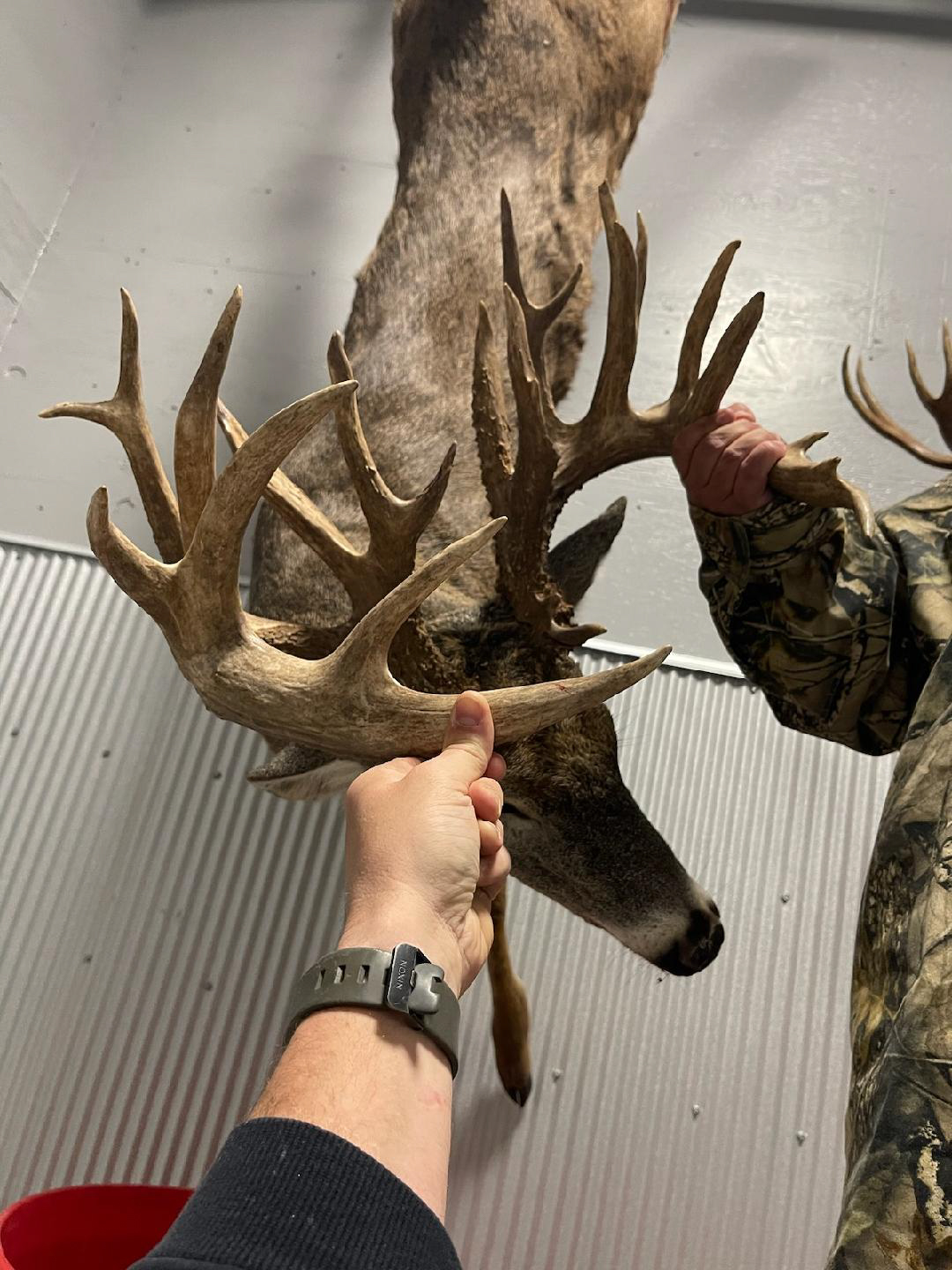
“The buck never knew what happened, or knew it was hit,” says Williams. He was shooting a fixed-blade 100-grain Slick Trick that he says struck the deer’s heart and passed completely through.
It was the first buck Williams had ever taken using a crossbow. He’d bought a Ravin that fall specifically with this buck in mind, thinking that if he was lucky enough to get a shot at the buck, it would have been somewhere around 50 yards—beyond his comfort range with his compound.
“If I’d known I was going to get an eight-yard shot at that buck, I’d have brought my compound,” he says. “But I wasn’t going to chance messing up that incredible opportunity for the buck of a lifetime, so I used my crossbow.”
Williams called his friend Travis and some other buddies to help him load the buck. Williams is quick to give others credit for his good fortune, noting that his buddies helped him set stands, blinds, and trail cameras so he could keep farming in the weeks leading up to deer season.
Williams says a Boone and Crockett scorer officially measured the buck in Topeka at a Buckmasters event in January. The 24-point nontypical had a gross score of 236 5/8 inches and a final score of 230 0/8 inches.
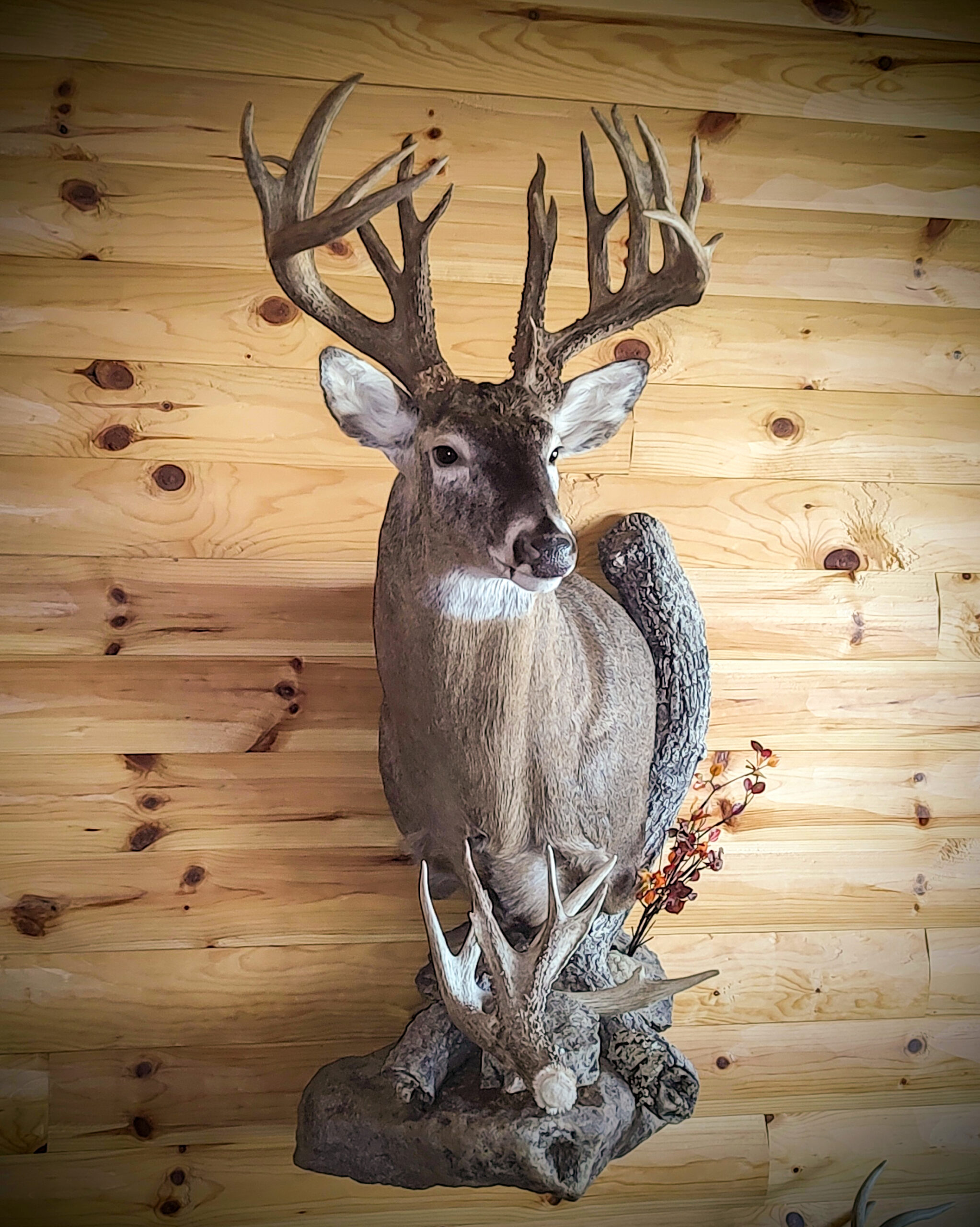
Boone and Crockett, which does not categorize deer by method of take, accepted the crossbow-killed buck into its record books, where it ranks as the 45th largest nontypical in Kansas. But Buckmasters records a separate crossbow category, and Williams’ deer is the new No. 1 nontypical whitetail taken with a crossbow in Kansas. (Buckmasters, which also has a slightly different scoring system from B&C’s, measured his buck at 244 1/8 inches.)
Williams says he’s missed some giant bucks in his 30-plus year bowhunting career, including a couple bucks that pushed into the 180- and even 190-class. But this buck has more than made up for those mistakes.
“My dad died almost two years ago, and he’s the one who brought me to this point in my hunting life,” says Williams. “Dad wasn’t much of a deer hunter. But he showed me the way to a good rural life and farming, and without him none of this would have happened … I wish he was here to help me celebrate this great buck, and share the joy it has brought me and a lot of others, too.”












